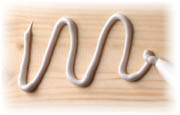
The mature North American sealant market, which faces a number of cost-related challenges, expects to see a rise in demand due to innovations in specific sealant technologies, according to a recent study.
"North American Sealant Markets," a study from Frost & Sullivan, an international marketing research firm, reveals that this industry generated revenues totaling $1.74 billion in 2002. Total market revenues are expected to reach $2.08 billion in 2009.
Damisetti Amulya, Frost & Sullivan research analyst, says, "Staying cost-competitive with other sealant products, while maintaining low prices and upgrading technologies to meet regulation standards and refined specifications, is proving to be a sizeable issue."
The diversity of available substrates (plastics, glass, wood, metal) and the need to find the most suitable sealant for specific applications compounds the problem of maintaining cost. Manufacturers also deal with changing industry standards and the differing definitions between sealants and adhesives.
Fluctuations in raw-material costs and petroleum prices make maintaining current prices difficult for manufacturers, and further reduction is not possible due to rising production costs.
Strong market presence would help in detecting fluctuations in the cost of raw materials or competitors' prices, and would help sealant formulators to implement effective business strategies. Manufacturers would also be able to identify means of increasing profit margins at challenging times. Continuous research and development efforts can help participants identify a solution that will meet manufacturers' requirements for curtailing process costs while maintaining product quality.
For instance, adoption of innovative products such as Purfect Glaze, which enables glass manufacturers to accelerate handling time, can reduce production and labor costs by nearly 30%.
"Shorter cure time, better performing seals, improved adhesion to a variety of substrates, and resistance to chemicals/gas, combined with a host of other innovations, are now increasing demand," Damisetti says.
The developments in silyl-terminated systems in the automotive industry and reactive hot-melt urethanes for window applications are particularly exciting innovations that will provide vital assistance to sealant formulators, leading to increasing opportunities both in newer and existing markets.
This market expects to receive a boost from the increasing number of renovations and construction projects, rising end-user awareness associated with the do-it-yourself (DIY) segment, and a focus on increasing the manufacturing rate. Implementing innovative systems that reduce costs, educating end users to help them identify appropriate solutions, and recognizing possible acquisitions are the keys to better market positioning.
"North American Sealant Markets," a part of the Chemicals & Materials subscription, offers revenue and volume shipment for sealants based on chemistry and end-user applications. The study covers silicone, polyurethane, acrylic, butyl, bitumen-based, polyvinyl chloride plastisol, and all other types of sealants that are used in the construction, automotive, industrial, DIY, aerospace, and marine industries.
For more information, e-mail Nuha Kadri, Industrial Media Relations Executive, at nkadri@frost.com or visit http://www.frost.com .
